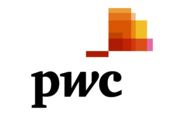
The need for behavioral health services is surging along with people’s stress levels.
Recent surveys, conducted by The Harris Poll on behalf of the American Psychological Association, reveal that more adults rated inflation (87%) and issues related to the invasion of Ukraine (80%) as stressors than any other issue since it began measuring stressors in 2007, including Covid-19. These heavy issues have hit individuals at a time when they’ve been dealing with the unpredictable, chronic pandemic. Nearly two-thirds of the adults surveyed (63%) said Covid-19 changed their lives forever.
“The number of people who say they’re significantly stressed about these most recent events is stunning relative to what we’ve seen since we began the survey in 2007,” APA CEO Arthur C. Evans Jr. said in a statement announcing the new survey results. “Americans have been doing their best to persevere over these past two tumultuous years, but these data suggest that we’re now reaching unprecedented levels of stress that will challenge our ability to cope.”
Patients, providers and insurers are feeling the strain.
“Across the country, we can't keep up with demand,” said Jennifer Facteau, vice president of enterprise behavioral health at Pittsburgh-based insurer Highmark Blue Cross Blue Shield. “There are not enough psychiatrists and psychotherapists out there, so it makes access really challenging. As health care leaders, we need to think creatively about solutions and how we provide access to care.”
Innovative approaches to meet demand for care
Those creative solutions, Facteau said, include using evidence-based screening tools to accurately identify symptoms and their severity. It also means increasing the use of virtual care and other digital solutions. Highmark, for example, has a partnership with Google to give members access to clinically-vetted content to help them with issues such as depression or anxiety.
“We also are launching an app to our membership that includes a coaching component,” Facteau said. “This is a great opportunity if you’re not ready to see a therapist or psychiatrist, but you want to get help around life skills.”
A problem of perception
Even though demand for mental and behavioral health services has increased, experts say many people aren’t receiving the care they need. Of adults with mental illness, for example, 57% received no treatment in 2020, according to the nonprofit Mental Health America.
Along with access issues, the negative perception of receiving care is an ongoing problem.
“We still have a stigma problem in behavioral health,” Facteau said. “I’m much more likely to share with my employer that I’ve been diagnosed with cancer, asthma or diabetes, for example, than I am to say I’ve been diagnosed with depression, anxiety, bipolar disorder or alcohol disorder.”
Highmark is in the process of launching a direct-to-consumer marketing campaign to raise awareness around the importance of mental and behavioral health and, hopefully, reduce negative perceptions around these issues. The goal is to educate people on how to talk about mental and behavioral health, how to recognize the signs and symptoms of common issues, and where people can go to get accurate information.
It is part of a strategy to focus on prevention and early intervention, Facteau said. “What if we can intervene and teach somebody stress management now, before they show up five to 10 years later with an anxiety disorder? What if we can teach sleep hygiene now, so you're not coming in 10 years later with sleep problems that are going to require a much higher-level intensity treatment?”
How employers can help
Employers have felt the strain the stresses of the past two years have placed on their workforce. Workers in the U.S. and Canada are the most stressed employees worldwide, according to Gallup’s State of the Global Workplace.
- Business leaders can help ease this challenge, Facteau said, by providing access to a wide range of mental health coverage and resources as well as prioritizing this type of health. This can include:
- Information on an employee website on topics such as emotional wellness, resiliency, burnout, stress management and sleep.
- Creating safe spaces for employees to talk about mental health.
- Incorporating mindfulness in day-to-day business activities.
- Normalizing the usage of all types of health care services, not just physical health.
“Whole health means three things — physical, behavioral and social health, she said. “We need to focus on elevating behavioral health and social health to be equal pillars to physical health.”
Learn more about Highmark's behavioral health services.
One of America's leading health insurance organizations and an independent licensee of the Blue Cross Blue Shield Association, Highmark Inc. (the Health Plan) and its affiliated health plans (collectively, the Health Plans) work to deliver high-quality, accessible, understandable, and affordable experiences, outcomes, and solutions to customers.
Lauren Lawley Head is a freelance writer for The Business Journals Content Studio.
